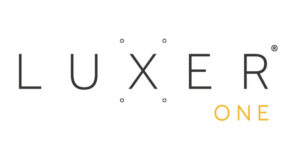
Flags fly outside of the Lyndon Baines Johnson Department of Education Building in Washington.
Credit: Bill Clark/CQ Roll Call via AP Images
The Trump administration doubled down on its plan to end diversity, equity and inclusion (DEI) initiatives in the nation’s schools last week by opening an online portal where parents and other community members can report educators and schools that use the programs.
The announcement about the EndDEI.Ed.Gov portal came on Feb. 27 — the day before a deadline for schools to end diversity and equity programs or risk losing federal funding. The DEI prohibition was issued in a Valentine’s Day missive from the U.S. Department of Education.
The online reporting tool has teachers and other school staff nervous.
“I can say, in general, that there’s a sense of concern (among educators),” said Steven Frazer, president of Associated Chino Teachers, Chino Valley Unified’s teachers union. “… A tool to report teachers, who could just be making sure that their classroom is a safe place for all students, who could potentially be vilified. So, it’s certainly a unique and uncertain, unfortunate climate right now for educators.”
The San Bernardino County school district, which has a conservative school board, has little diversity, equity and inclusion programming, Frazer said. Despite that, teachers in the district feel susceptible to being reported to federal authorities.
The district’s board has already been at odds with the teachers union and the state over a board policy that required teachers and school staff to notify parents if they believe a child is transgender.
Frazer is concerned that the White House effort to end diversity, equity and inclusion will embolden the school district to disregard a California law requiring ethnic studies classes to be offered next school year. There is also concern for the future of clubs that support students of color and LGBTQ youth, among others, he said.
“Things like that, outlets like that, are what make school a safe place for many students,” Frazer said. “A lot of students don’t get recognized enough at home, and so school is an outlet for them. And really, what keeps their mental state positive, what encourages them to learn and be happy and successful, is being able to meet in groups like this.”
Definitions of DEI vary
DEI has become a divisive issue in recent years, with the term’s definition and value dependent on a person’s political ideology.
“For me, it means ensuring that the marginalized are included and that equity is served, in that everyone can receive what they need to thrive, especially in a school district,” said Janice Rooths, executive director of the Center Against Racism and Trauma, which serves the state’s Inland Empire region. “And so, when you say that everyone should get what they need to thrive, it applies to every student.”
Schools with successful DEI programs offer teachers and administrators cultural sensitivity training and ensure students understand that using negative racial epithets or other threatening words is unacceptable, Rooths said.
On the other side, critics of DEI see it as dividing students, or making white students feel uncomfortable or bad about themselves. They say DEI focuses on race and ethnicity over merit.
“For years, parents have been begging schools to focus on teaching their kids practical skills like reading, writing, and math, instead of pushing critical theory, rogue sex education and divisive ideologies, but their concerns have been brushed off, mocked, or shut down entirely,” said Tiffany Justice, a co-founder of Moms for Liberty, in a statement included in a U.S. Department of Education news release announcing the portal.
Moms for Liberty is a far-right organization that has advocated against school curricula that include LGBTQ rights and instruction on race and ethnicity.
Portal opens just before deadline
The End DEI portal is separate from a webpage that already collects complaints of discrimination on the Department of Education’s Office of Civil Rights website.
“The U.S. Department of Education is committed to ensuring all students have access to meaningful learning free of divisive ideologies and indoctrination,” according to a media release announcing the portal.
In its Feb. 14 letter, the U.S. Department of Education letter claims that white and Asian American students have been discriminated against, and that “educational institutions have toxically indoctrinated students with the false premise that the United States is built upon ‘systemic and structural racism.’ ”
The letter states that schools must cease using race preferences in their admissions, hiring, promotion, scholarship, prizes, administrative support, sanctions, discipline and other programs and activities, including race-based graduation ceremonies and dorms.
On Feb. 21, the California Department of Education and State Board of Education issued a joint statement to reassure state residents and school officials that federal laws regarding public education have not changed, and that executive orders from the White House and memos from the U.S. Department of Education cannot modify or override them.
“We advise continued compliance with state and federal laws, and recommend that administrators and governing boards consult legal counsel regarding the impact of any potential federal actions,” the statement read. “If federal laws or regulations do change, we will provide guidance and take action as needed in continued support of California’s students and local educational agencies.”
In his own letter to school district leaders, State Superintendent of Public Instruction Tony Thurmond said the California Department of Education and other state agencies will consider legal action if the federal government attempts to freeze or cut funding because districts have diversity, equity and inclusion programs in place.
Teachers unions file lawsuits
The U.S. Department of Education letter and its demands have already resulted in at least two lawsuits. Both include the nation’s largest teachers’ unions. The American Federation of Teachers and American Sociological Association filed a lawsuit against the U.S. Department of Education on Feb. 25, and the National Education Association and the American Civil Liberties Union did the same on Wednesday.
The lawsuits urge the court to block the Department of Education from enforcing a directive that they say undermines civil rights, stifles free speech and dictates what educators can teach.
“Across the country, educators do everything in their power to support every student, no matter where they live, how much their family earns, or the color of their skin — ensuring each feels safe, seen, and is prepared for the future,” said Becky Pringle, president of the National Education Association.
“Now, the Trump administration is threatening to punish students, parents and educators in public schools for doing just that: fostering inclusive classrooms where diversity is valued, history is taught honestly, and every child can grow into their full brilliance.”










 Transact Campus
Transact Campus




